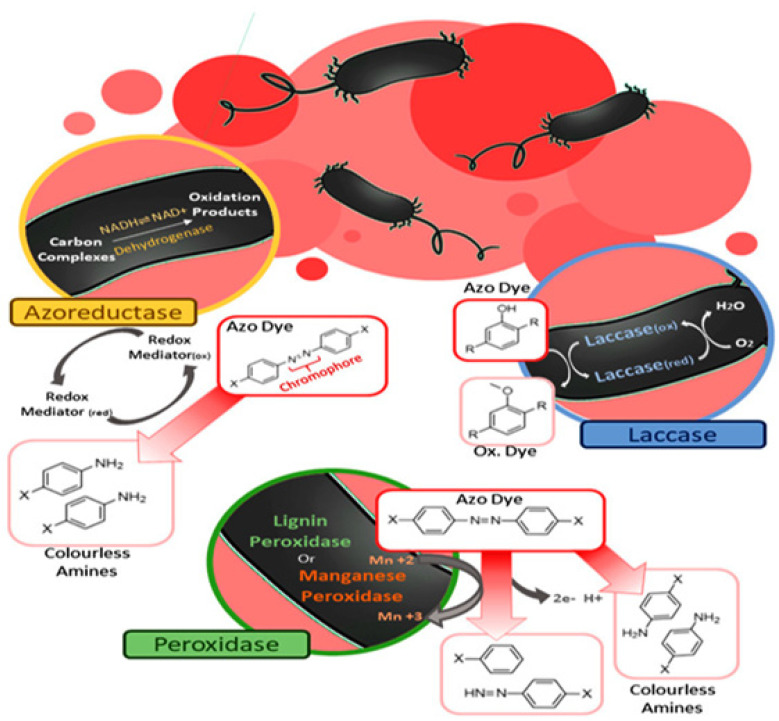Figure 4.
Schematic representation of three general bacterial enzymatic degradation mechanisms of the azo chromophore group, first showing the enzymatic degradation via the action of azoreductases—yellow—in this example using NADH as an essential reducing agent for the cleavage of azo bonds, generating aromatic amines and thus discoloring the medium. Then—clockwise—we have the catalytic reaction cycle mediated by laccase—blue—with the generation of an oxidized substrate instead of potentially toxic amines, in addition to not requiring cofactors. Finally, peroxidase enzymes—green—such as lignin peroxidase and manganese peroxidase, the two enzymes most commonly used for dye degradation, illustrate some possible products according to the cleavage of their bonds, which can be symmetric or asymmetric (Figure 4 is originally printed and adapted from Pinheiro et al. [87]. Copyright: © 2023 by the authors. Licensee: MDPI, Basel, Switzerland. This article is an open access article distributed under the terms and conditions of the Creative Commons Attribution (CC BY) license.

